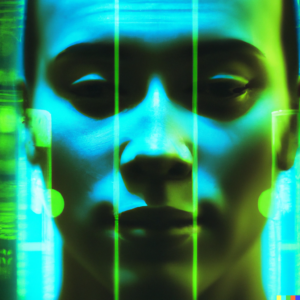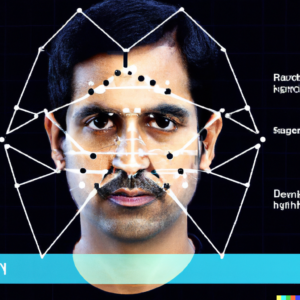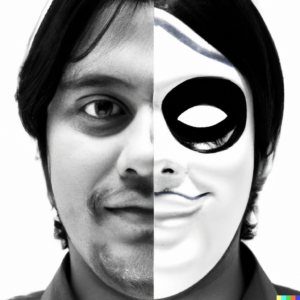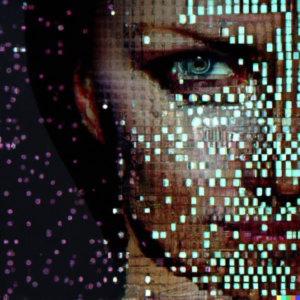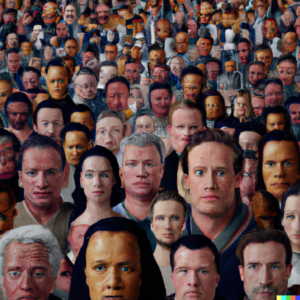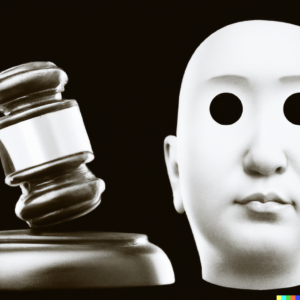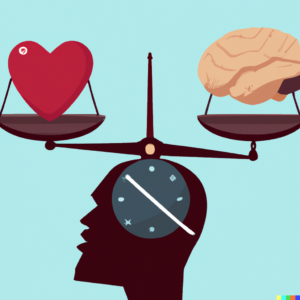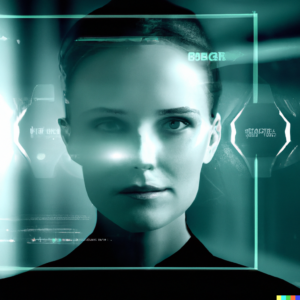Eyes Wide Open: Introduction to Facial Recognition
Welcome back to LimeRocket! If you’ve used your smartphone to unlock your screen, tagged friends on social media, or breezed through immigration control at an airport, you’ve probably interacted with facial recognition technology. It’s an intriguing facet of artificial intelligence that’s rapidly becoming a part of our daily lives, and its rise hasn’t gone unnoticed.
Facial recognition technology is exactly what it sounds like – a technology capable of identifying or verifying a person’s identity using their face. It’s been embraced by sectors as diverse as law enforcement, retail, healthcare, and entertainment. Yet, its rapid proliferation and integration into both public and private spaces have raised more than a few eyebrows.
As we stand at the crossroads of technological innovation and personal privacy, it’s important to understand what facial recognition technology is, how it’s used, and the ethical implications it carries. In this post, we’re going to do just that. Buckle up as we embark on a fascinating journey into the face of the future!
Through the Looking Glass: How Facial Recognition Works
To fully appreciate the ethical discussions around facial recognition, we first need to understand how it works. Facial recognition is a complex blend of biometrics, computer vision, and machine learning.
At its most basic, facial recognition technology maps facial features from a photograph or video. It then compares this information with a database of known faces. Sounds simple enough, right? Yet behind this straightforward concept lies a sophisticated and intricate process.
The technology begins by identifying a face in the frame. It then analyzes this face by breaking it down into unique features, such as the distance between the eyes or the shape of the cheekbones. This is usually called a facial signature – a complex mathematical formula representing the face’s unique characteristics.
The facial recognition system then converts this facial signature into a faceprint, a numerical code representing the face in the system. It’s this faceprint that is used for comparing a new face with the faces stored in the database. The system looks for potential matches based on how similar the faceprints are.
It’s worth noting that the accuracy of facial recognition systems can vary. They depend on a host of factors, including the quality of the original image, the size and integrity of the database, and the algorithms used by the system.
By harnessing the power of machine learning, these systems can become better over time. They can learn to recognize faces from different angles, under different lighting conditions, or when partially obscured. However, while this technology’s prowess is undeniably impressive, it’s not without its issues. As we’ll discover in the upcoming sections, the same attributes that make facial recognition technology so powerful also contribute to its ethical complexity.
Mirrors and Masks: The Pros and Cons of Facial Recognition
While facial recognition technology often makes headlines for its controversies, it’s important to recognize its beneficial uses as well. Technology is being employed across numerous industries and sectors, enhancing security, convenience, and even health.
Let’s start with the most obvious one: security. From unlocking smartphones to airport customs, facial recognition is being used to verify identities and maintain security. It offers a hands-free, non-contact method of identification that is harder to forge compared to traditional methods like passwords or ID cards.
Retail companies use facial recognition to prevent theft, identify VIP customers, and tailor in-store promotions. It’s a valuable tool that can help businesses enhance their customer experience while maintaining safety and security.
In the realm of healthcare, facial recognition holds enormous potential. For instance, it can help doctors and nurses monitor patients remotely, identifying individuals who may require immediate medical attention. Additionally, research is underway to use facial recognition to identify genetic conditions or assess pain levels, which could revolutionize diagnostics.
Not forgetting the role of facial recognition in social media platforms and photo-tagging services, which leverage this technology to suggest tags for people in photos, thereby enhancing user experience.
These examples merely scratch the surface of how facial recognition can be used positively. The potential applications are vast, promising a future where facial recognition technology can serve as a powerful tool for good. However, as with any tool, much depends on the hands that wield it. In the next section, we’ll delve into some of the ethical concerns that this technology raises.
Shadows in the Glass: Privacy Concerns in Facial Recognition
As remarkable as facial recognition technology is, its widespread use also brings with it significant ethical concerns. There are question marks over issues like privacy, consent, and the potential for misuse, which need to be thoroughly addressed.
Foremost among these is privacy. In an era where our digital footprints are expanding and data breaches are not uncommon, the collection and storage of biometric data is a significant concern. After all, if a password is compromised, it can be changed; but what happens if your biometric data is stolen?
Consent is another thorny issue. People might be aware that facial recognition is used at airport customs or to unlock their phones, but what about its more inconspicuous uses? Are customers aware when they are being tracked in retail stores? Are social media users informed about how their data is used to train facial recognition systems?
There is also the question of accuracy and bias. Studies have shown that facial recognition systems are not always accurate and have particularly high error rates for people of color, women, and the elderly. These inaccuracies can have serious implications, especially when used in critical areas such as law enforcement.
Lastly, the potential for misuse cannot be ignored. Without robust regulations and oversight, there is a risk that facial recognition technology could be used to enable surveillance, infringe upon civil liberties, or even support oppressive regimes.
Navigating this ethical landscape is a complex task. It requires open dialogue, thoughtful legislation, and responsible innovation. And as we’ll discuss next, there are efforts underway to tackle these issues head-on.
Faces in the Crowd: Controversial Uses of Facial Recognition
As facial recognition becomes more widespread, its usage has stirred considerable controversy in various sectors. Let’s explore some notable case studies that spotlight the challenges and ethical dilemmas inherent in this powerful technology.
- Law Enforcement and Public Surveillance
- Perhaps the most contentious application of facial recognition technology is in law enforcement and public surveillance. In the U.S., law enforcement agencies have used facial recognition to identify suspects, often without the individuals’ knowledge or consent. This practice has sparked privacy and civil liberties concerns, especially given the technology’s inaccuracies and biases against certain racial and ethnic groups.
- A notable instance was the wrongful arrest of Robert Williams in Detroit, who was misidentified by a facial recognition system as a shoplifter. The case highlighted the grave consequences of relying on flawed technology in critical domains like law enforcement.
- Schools and Campuses
- Facial recognition has also been introduced in some educational institutions for monitoring attendance and enhancing campus security. However, critics argue this creates a ‘school-to-surveillance’ pipeline, infringing on students’ privacy rights and potentially normalizing surveillance from a young age.
- Retail and Advertising
- In the retail sector, some companies use facial recognition to identify repeat customers or suspected shoplifters. However, this application has been criticized for potential misuse, such as profiling customers based on their shopping habits or physical appearance.
- COVID-19 Contact Tracing
- The pandemic saw an uptick in the use of facial recognition for contact tracing and enforcing quarantine. While arguably effective, this application raised concerns about the potential for state surveillance and the erosion of personal privacy.
These cases illustrate the significant ethical and privacy concerns associated with facial recognition. As technology continues to evolve and permeate various aspects of our lives, it becomes increasingly imperative to address these issues and regulate its use effectively.
Behind the Curtain: The Role of Regulation in Protecting Privacy and Human Rights
As facial recognition technology proliferates, the need for robust and comprehensive regulation becomes increasingly pressing. Effective regulation can play a pivotal role in addressing the ethical and privacy challenges presented by facial recognition, ensuring that the technology is used in ways that respect privacy, human rights, and democratic values.
A key starting point for any regulatory framework is transparency. It’s crucial that organizations using facial recognition disclose their usage, methodologies, and safeguards against misuse. Individuals should have the right to know when, how, and why their facial data is being used and have avenues for recourse if they believe their privacy rights have been violated.
Another vital component is accountability. If facial recognition systems make errors or are misused, there must be clear channels for holding the responsible parties accountable. This includes both legal consequences for misuse and the ability to challenge the system’s outcomes.
Regulations should also address the biases and inaccuracies of facial recognition systems. Companies that develop these systems should be required to regularly test them for accuracy and bias and improve them when necessary. The use of facial recognition in sensitive domains such as law enforcement and public surveillance should be heavily scrutinized, and in some cases, limited or prohibited.
Moreover, privacy rights should be at the heart of all regulations. Consent is key: individuals should have the right to opt out of facial recognition systems when possible, and their data should be adequately protected if they do opt-in.
Around the world, some governments and municipalities are already taking steps to regulate facial recognition. For instance, the European Union is considering a five-year ban on the use of facial recognition in public spaces to allow time for crafting effective regulations. In the U.S., several cities have banned the use of facial recognition technology by local agencies.
These examples represent important first steps, but comprehensive, internationally agreed-upon regulations are needed to fully address the global implications of facial recognition technology. As we continue to grapple with these issues, it’s critical that lawmakers, tech companies, and the public engage in open dialogue to shape a regulatory landscape that balances the potential benefits of facial recognition with the need to protect individual privacy and human rights.
Gazing into the Future: Balancing Utility and Ethics in Facial Recognition
The future of facial recognition technology hinges on the ability to balance its utility with ethical concerns. As we continue to integrate this technology into our societies, we must navigate a path that respects privacy rights, upholds human dignity, and maintains public trust, while still reaping the benefits facial recognition can offer.
One critical component of this balance is the ongoing development of technical safeguards and improvements. The technology needs to be continuously refined to reduce biases and improve accuracy. Investing in research that makes facial recognition more equitable and reliable will be key in its ethical evolution.
Secondly, clear and robust regulations will be vital. As discussed earlier, these regulations should protect privacy, ensure transparency and accountability, and guard against misuse. Importantly, they should also be flexible and adaptive enough to keep pace with the rapidly evolving technology.
Moreover, public discourse around facial recognition needs to be encouraged. Creating forums for discussion allows citizens to voice their concerns, understand the technology, and participate in shaping its use. A well-informed public is essential to maintaining democratic control over such a powerful tool.
Lastly, it’s essential to foster a culture of ethical consideration within the tech industry itself. Companies developing and deploying facial recognition systems should be held to high standards of ethical conduct, moving beyond mere legal compliance to incorporate privacy and human rights considerations into their core values.
In conclusion, the facial recognition journey is far from over. We’re at a juncture where we can shape its path, using the lessons learned from past and present controversies to navigate toward a future where facial recognition technology serves humanity without compromising its values. This is a complex and delicate task – but with thoughtful discourse, rigorous regulation, technical refinement, and ethical commitment, it is certainly within our grasp.
Reflections: The Face of the Future
As we wrap up our exploration into the world of facial recognition technology, it’s clear that this potent tool is reshaping our societies in profound ways. From transforming security protocols and enhancing user experiences to sparking controversy and raising pressing ethical questions, facial recognition is undoubtedly a defining technology of our time.
The path ahead is lined with challenges, but also abundant with opportunities. On one hand, we must grapple with issues of privacy, consent, bias, and potential misuse. On the other hand, we have the potential to revolutionize sectors ranging from law enforcement to retail, public safety to personalized advertising.
In essence, we find ourselves in a delicate dance of progress and caution. The rapid advancement of facial recognition technology underscores the need for a thoughtful approach, one that upholds the values we hold dear—individual privacy, equity, and democratic control—while paving the way for innovation and progress.
It is our collective responsibility to ensure this technology evolves in a manner that benefits humanity. That means investing in ongoing research and development, enacting robust and adaptive legislation, fostering public understanding and discourse, and promoting ethical considerations in technological deployment.
In many ways, facial recognition technology presents us with a mirror reflecting not only our physical selves, but our values, ethics, and collective aspirations as a society. By navigating its complexities with thoughtfulness and care, we can ensure that the face of the future is one we recognize and are proud of.

